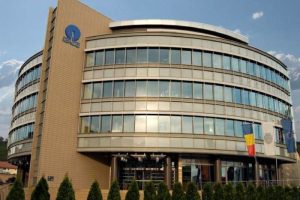Alătură-te comunității noastre!
Vezi cele mai recente știri & informații din piața de capital

Chinese money will drive Europe’s green mobility challenge. More than one in five cars sold on the continent last year was an electric car, making the region the world’s second-largest market for e-vehicles after China.
That presents a tantalising new opportunity for battery makers from the People’s Republic, which already supply European brands such as Volkswagen, BMW and Stellantis, as well as global compatriots such as Volvo owner Geely.
Overreliance on Chinese market leader CATL and its competitors could be a risk. But competing European battery companies are still scarce, and global automakers have more to gain than lose.
Chinese battery suppliers such as Contemporary Amperex Technology (CATL), SVOLT, Envision, and most recently EVE Energy are shaking up European electromobility supply chains.
The Asian country’s global investment in batteries quadrupled last year from the previous year to €14.2 billion, data from Rhodium show. At €4.5 billion, investment in projects to build new plants in Europe exceeded spending on mergers and acquisitions.
It’s not just battery manufacturers. Suppliers such as Shanghai Putailai New Energy Technology, which makes anodes – a key component that allows current to flow in a battery – are also moving west.
This influx will transform Europe’s fledgling electric car industry. First, the Chinese newcomers can control costs. In April, prices for cells – modules that are assembled into battery packs – were often more than a quarter lower in China than in Europe, according to a survey by segment specialist Benchmark Mineral Intelligence.
European battery makers will have a hard time competing. They lack the sheer scale of rivals such as $140 billion CATL, which accounted for more than a third of global battery sales in the first quarter of the year, according to Bernstein.
The $7.6 billion Hungarian plant, which is expected to begin mass production in 2025, will be the largest in Europe to date, with an annual capacity of 100 gigawatt-hours. Sweden’s $1.3 billion Putailai plant will also be the largest anode plant in Europe.
Another advantage is affordable access to raw materials. Size helps companies from the People’s Republic negotiate more favourable contracts.
In addition, Chinese auto and component makers appear to be leading the race to acquire mining companies and manufacturers of key cell components: according to data from Dealogic, 40% of all such deals over the past five years have involved Chinese buyers. According to the Wall Street Journal, companies from the Asian country have spent about $4.5 billion to acquire stakes in nearly 20 lithium mines over the past two years.
Last but not least, Chinese producers offer more advanced technology, such as lithium iron phosphate chemistry, which makes batteries cheaper and safer and cannot yet be produced on a commercial scale by European or South Korean competitors such as LG Chem and Samsung SDI.
Winners and losers
Not everyone will win, however. By gaining a foothold in the relatively young European market, Chinese competitors could make it harder for emerging companies like Sweden’s Northvolt to thrive.
That could also attract unwanted attention from regulators. While regulators have traditionally found it harder to scrutinise greenfield investments such as factories, new policies and growing geopolitical tensions now give European Union authorities a greater toolbox.
The European regulation on foreign subsidies, which took effect in January, allows the European Commission to scrutinise both EU and international investments for potential benefits from government subsidies.
These powers also extend to new settlements. Another initiative, tentatively agreed to by the European Parliament and EU governments in December, will set stricter standards specifically for battery supply chains, requiring responsible sourcing of raw materials and recycling to recover essential materials.
Although the rules will apply to all companies, not just Chinese corporations, they could complicate the process of setting up shop in the 27-nation community.
Meanwhile, the large subsidies triggered by the United States’ Inflation Reduction Act have sparked debate over whether other countries should do more to support local businesses.
Earlier this month, French President Emmanuel Macron argued that companies from non-EU countries should not have access to French taxpayer-funded incentives.
Tighter EU restrictions could be bad news for automakers such as Mercedes-Benz, which already plans to buy batteries from Hungary’s CATL plant. A crackdown could also leave EU automakers facing countermeasures in the Chinese car market, the world’s largest.
European companies will have to hope bureaucrats take a leaf out of China’s own playbook. When Tesla first announced its mega-factory in Shanghai in 2018, its announced production of 500,000 vehicles a year was equivalent to nearly half of the entire country’s annual electric car sales, making it a serious competitor for smaller Chinese brands.
By 2020, a year after the first car rolled off the assembly line, Elon Musk’s company had sold more than double that target, and its flagship Model 3 was China’s top seller.
But Tesla’s massive factory also offered advantages for China. It created critical production mass, jump-started the emerging industry’s supply chains, and lowered costs for domestic and foreign competitors.
Given the chance, Chinese battery makers can boost Europe’s own supply chains, as well as those of European automakers.









Vezi cele mai recente știri & informații din piața de capital